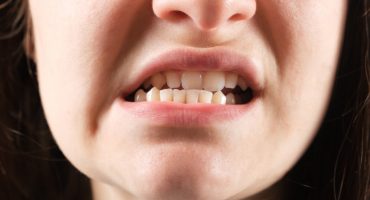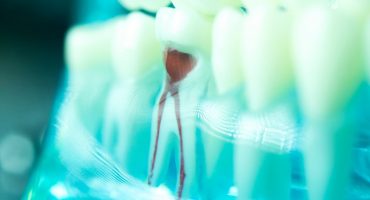Tartar is a solid, cementitious deposit near the gum near the gum line that can not be removed by brushing or rinsing. Tartar occurs when the plaque is not properly removed and bacteria and microorganisms settle in the plaque and harden it. If the tartar is not removed in a timely manner, the bacteria that live there can lead to serious sequelae such as gingivitis and periodontitis.
What is tartar?
Tartar occurs only where plaque has not been removed thoroughly enough from the teeth and interdental spaces. The protein layer of the plaque forms a good breeding ground for all bacteria that are present in the normal oral flora. If the colonization of bacteria on the protein layer is undisturbed, they multiply unchecked. Between the bacteria, a network of protein and carbohydrates is created, which serves both as a food reserve for the bacteria and as a layer for mechanical reinforcement of the plaque. The plaque solidifies and calculus is formed.
Since calculus is more porous than the enamel, discoloration occurs easily and very quickly. The consumption of nicotine, tea or coffee turns reddish gray. Although these discolorations are only of a cosmetic nature, especially in these cases the build-up of tartar should be prevented and already formed tartar should be removed.
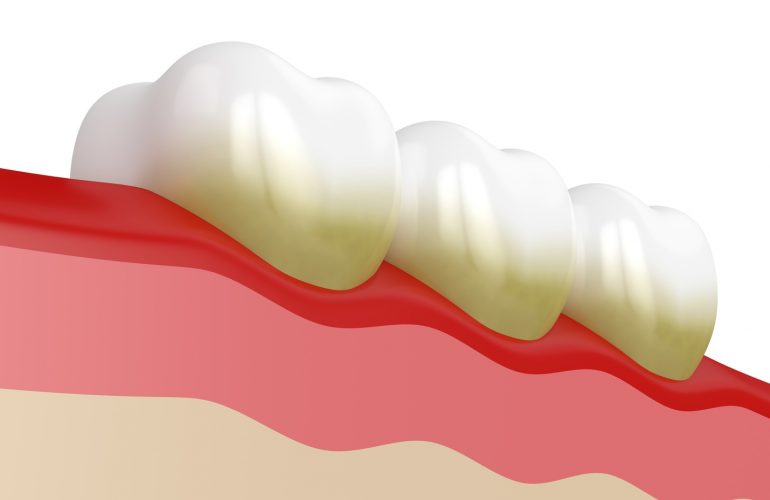
Causes of tartar
Like plaque, tartar is also caused by inadequate oral hygiene. While colonization of plaque is natural in every human being, you can specifically prevent the formation of tartar. The entire oral cavity is constantly colonized by a variety of microorganisms responsible for the protection of the mucous membranes and the strengthening of the oral defense. By daily cleaning of the teeth, the population is kept at a level that is harmless to humans.
If the dental care neglected or insufficiently carried out, the microorganisms multiply unhindered in the oral cavity and quickly become a major nuisance. Their secretions cause plaque to form on the teeth. If it is not removed regularly and thoroughly, just a few days are enough to develop persistent tartar.
Especially very mineral-rich food such. Mineral water or Schüssler salts favor the formation and growth of tartar by the deposition of other minerals.
A possible change in diet should be discussed with the dentist necessarily. For high and frequent sugar consumption should be dispensed with tartar, because this is offered by the various sugar compounds in the food microorganisms additional food. They multiply all the more in the plaque and tartar and promote their growth.
Due to the secretion products of microorganisms in the decomposition of sugar, the acidity in the saliva increases, the tooth surface is attacked directly and the formation of decay is the result. Some of these microorganisms are substances that lower the body's immune defense and thereby cause inflammation in the oral cavity, such as Gingivitis, cause. If the microorganisms are not removed, the result may be periodontitis.
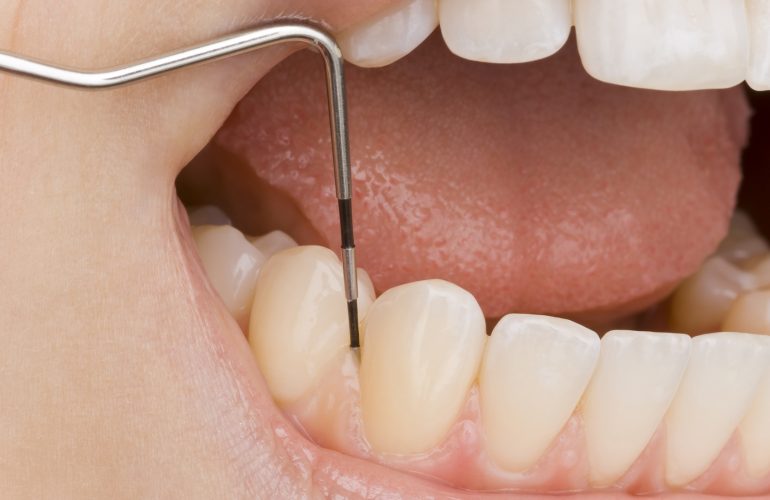
How to recognize tartar?
Tartar is visible through a yellowish gray solid coating on the tooth transition to the gums, but hurts just like plaque not. That is why many people do not prevent or prevent tartar from being professionally removed. The fact that this can lead to complications such as caries, gingivitis and periodontitis, which can also have severe effects on the entire body, is not clear to most patients.
For a clear diagnosis of tartar you do not need a dentist. Most commonly it forms in the area of the ducts of the salivary glands in the mouth, which are located on the inside of the jawbone near the mandibular incisors and on the outside of the jawbone near the upper molars. If one sees here at the lower end of the teeth a yellowish white deposit with a rough, porous surface, which can not be removed by simply brushing one's teeth or gently rubbing with the finger, then tartar has already formed. If it is not properly removed, then the remaining tooth surfaces are quickly colonized by tartar.
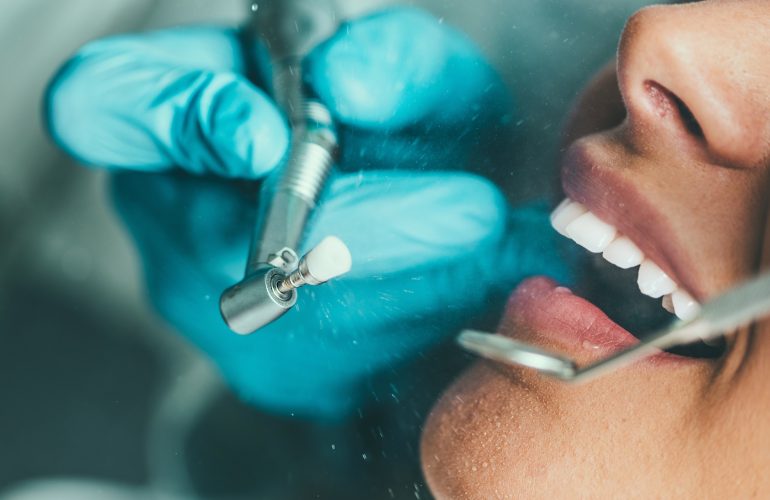
How can tartar be removed?
Emerged tartar can only be professionally removed by a dentist. It is either scraped off the tooth surface purely mechanically with hand instruments such as scaler or curette or removed by machine with an ultrasound machine. Each patient has a claim for a tartar removal treatment per calendar year.
Mechanical removal of tartar
The mechanical removal of tartar using special scalers or curettes was still the most common treatment method until just a few years ago. However, it is often difficult not to hurt the sensitive tooth enamel by scraping and rubbing. Many patients complain of sensitive teeth after such treatment.
In contrast to the mechanical removal of the tartar with ultrasound, the treatment method is painless.
Machine removal of tartar
Although machine removal of tartar with ultrasound is uncomfortable to mildly painful, today it is the most widely used treatment method in Germany. The needle of the ultrasound machine is placed close to the tooth for removal and vibrated. As a result, the tartar is gently released from the teeth, without injuring the underlying enamel.
However, this method of treatment is not pleasant, since the vibrations of the ultrasound needle are transmitted to the tooth and irritate the tooth nerve located therein.
Prevention is the best treatment
The effective protection against tartar is a careful and intensive oral hygiene. At least twice brushing your teeth should be the order of the day. In no case should one forget the interdental spaces, because here lurks most of the plaque due to the heavy access with the toothbrush. The teeth can only be properly cleaned by a combined application of toothbrush and floss, with which one can then clean both the tooth surface and the interdental spaces. The proper use of dental floss should be shown by a dentist, because not only can the cleaning be insufficient, but also the sensitive gums can be irritated and damaged.
About twice a year, a professional tooth cleaning (PTC) should also be performed to prevent gingivitis and periodontitis. A PTC costs depending on the dentist and extent of cleaning between 50 and 150 euros and is unfortunately not covered by the general health insurance. It should be understood, however, that not all costs incurred for the possible serious consequences of inadequate oral hygiene (such as tooth decay, gingivitis or periodontitis) are covered by the health insurance. The costs incurred here can exceed the cost of a simple PTC many times over.
The right precaution in this case is cheaper than the aftercare. If you have an additional dental insurance, then part of it, in some insurance companies even the entire cost of a PTC. Just ask your insurance company to what extent costs and how often per calendar year are taken over. Since such supplements do not cost very much per month, it often makes sense not to pay the PTC privately, but instead to take out additional insurance that fully covers the costs. She will then pay for other dental treatments that are not paid by the general health insurance.
Weitere Beiträge
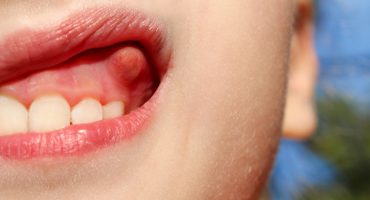
Abscess
An abscess is the accumulation of pus in a body cavity that is not naturally present. In this case, the pus formed during an inflammatory process penetrates into the surrounding body tissue, where it thus creates its cavity. In the cavity formed by the inflammatory melting of the tissue, the pus accumulates against the adjacent tissue.


